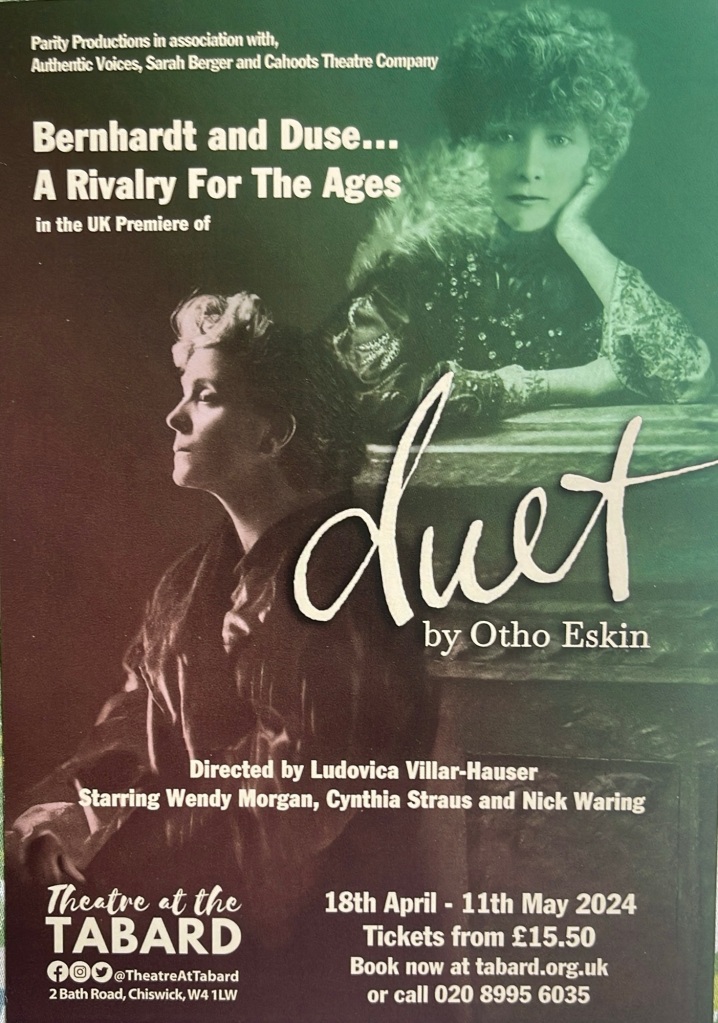

Tonight is the night and what a night it was with the two divas unexpectedly confronting each other in the Green Room as La Duse is about to appear to a sold out house .

The ghost of Sarah Bernhardt appears and Duse ,the only one that can see her as they unexpectedly share the star dressing room.
Duse at that point tells the theatre manager that she will no longer cancel her performance but egged on by Sarah she will show the public who is the Queen of the boards
Just three people on stage ,the two divas and their manager playing many roles throughout the evening as the dramatic confrontation plays itself out.
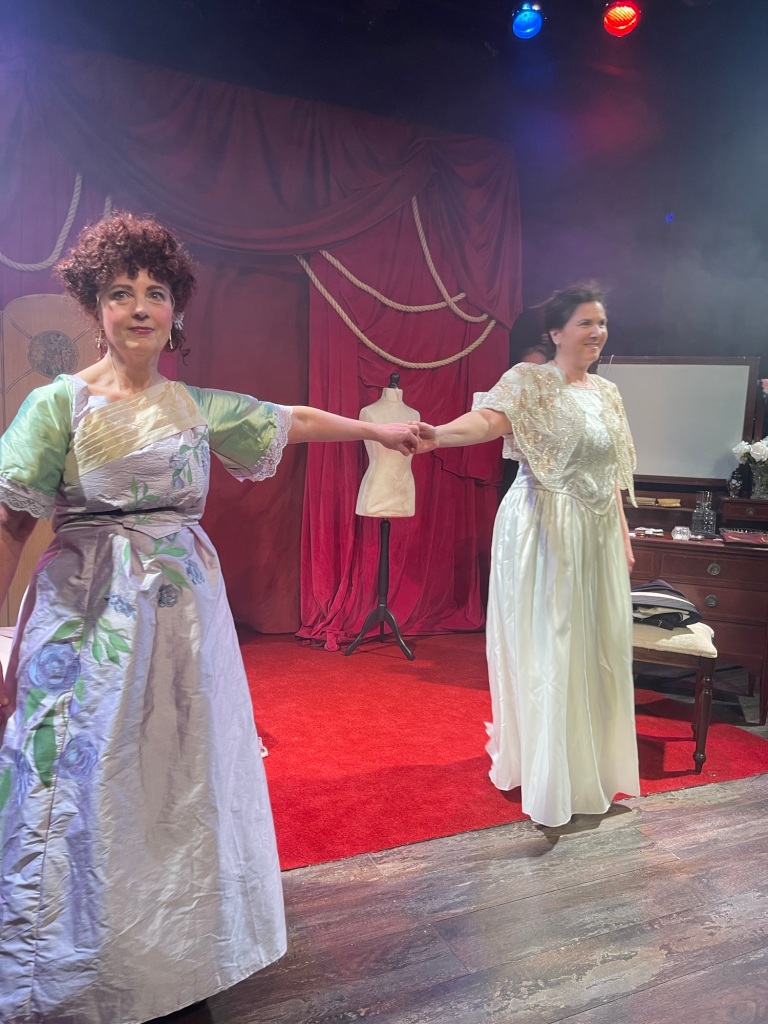

The scintillating Bernhardt of Wendy Morgan is contrasted by the morose intensity of Cynthia Straus as Duse.Nick Waring ,a man of many parts,manages to console and appease the two sparing Divas and is infact the hero of the evening.
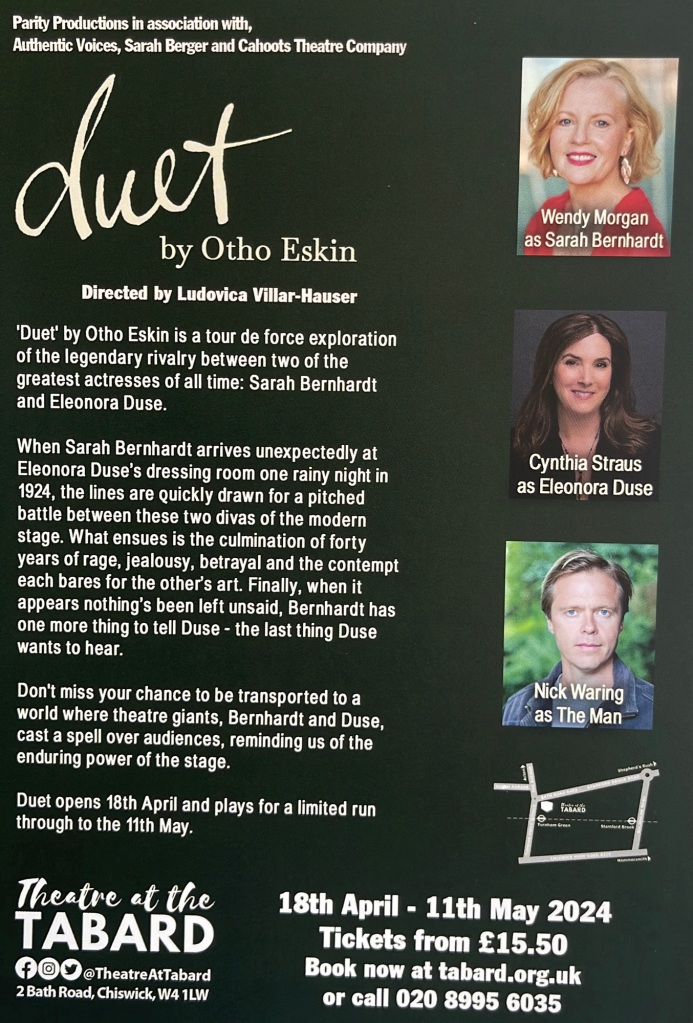
A bare minimum of things on stage so it is the bravura of the actors that brings this play to life with intensity,wit and imagination.I remember seeing another ‘Duet’ many years ago in west London at the Shepherds Bush Theatre Upstairs.It was a ‘Duet for One ‘ with the dramatic confrontation of Jaqueline Du Pre and her doctor as she tried to come to terms with multiple sclerosis.It went on to be seen on many of the major stages in the world and I would not be surprised to see this Duet take wing as well.Bedford Park once again the cultural haven that it used to be with just this week a scintillating new theatre production in the Tabard Theratre and just over the road a few days ago at St Michaels and all Angels a magnificent recital by one of the finest pianists of his generation.Who knows what the annual Bedford Park Festival will hold in store in June.
Mark Viner at St Michael and All Angels bringing mastery and discovery to Chiswick https://christopheraxworthymusiccommentary.com/2024/04/18/mark-viner-at-st-michael-and-all-angels-bringing-mastery-and-discovery-to-chiswick/
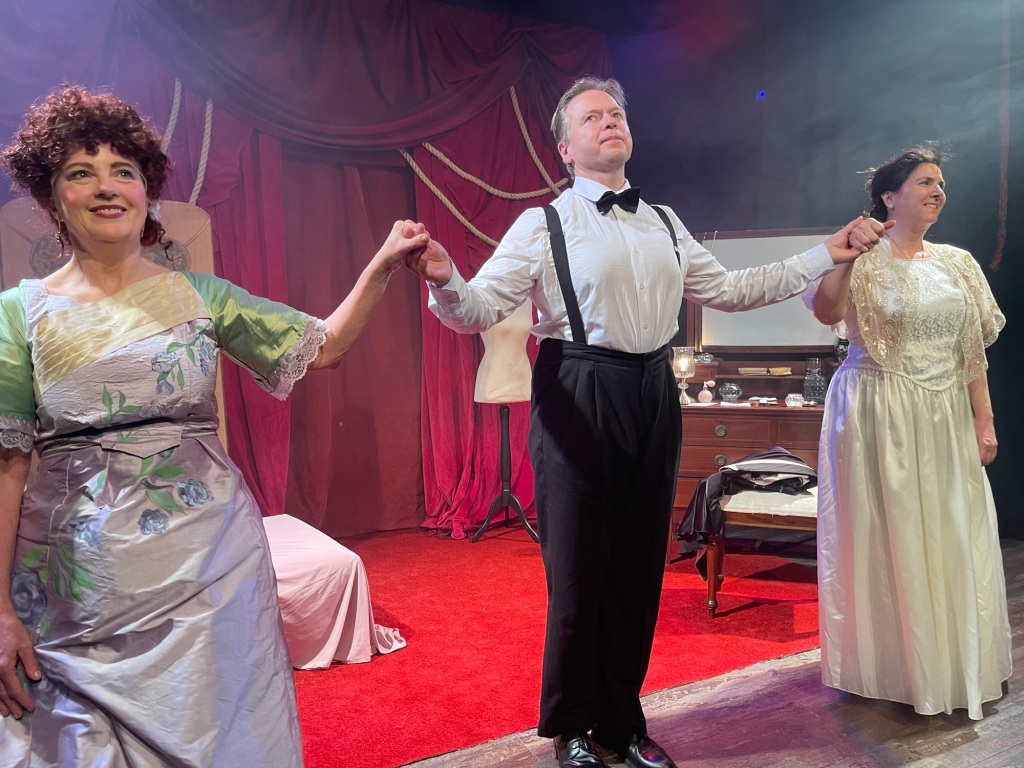
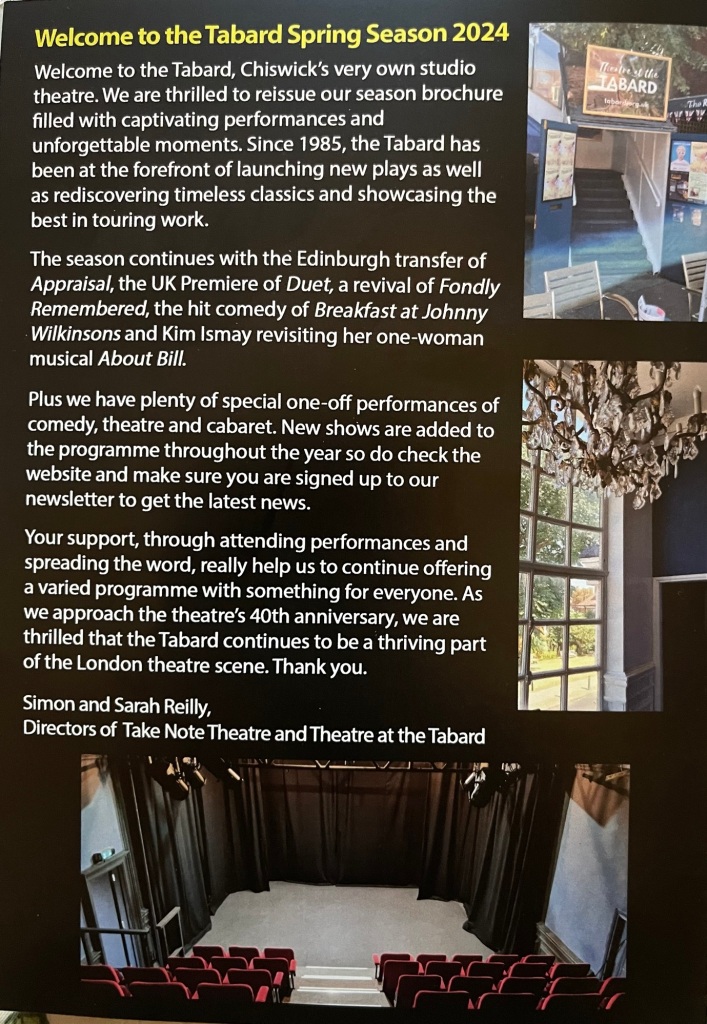

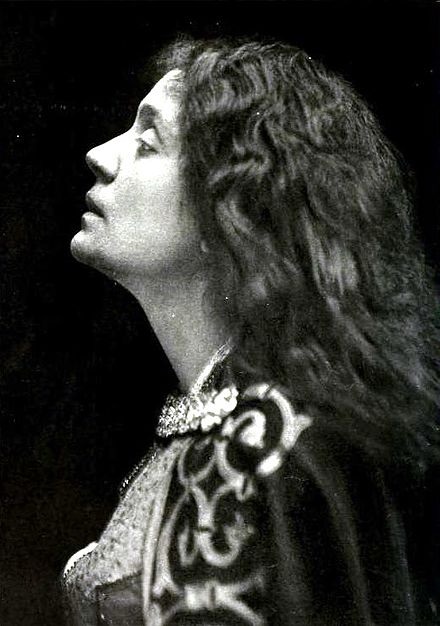
Eleonora Giulia Amalia Duse photo of 1901
3 October 1858 Vigevano ,Pavia Italy
21 April 1924 Pittsburgh ,Pennsylvania U.S.A
Duse was cryptic regarding her acting style. She claimed not to have a technique of any sort, and scorned at efforts to put her art into a science. What is known is that she had a highly heterodox, almost religious philosophy of acting, seeking to “eliminate the self” and become the characters she portrayed. It is a common misconception that her acting was purely intuitive and spontaneous, in reality she labored over her craft.
Duse wore little makeup[5] but “made herself up morally. In other words, she allowed the inner compulsions, grief and joys of her characters to use her body as their medium for expression, often to the detriment of her health.”
Her art depended on intense naturalness rather than stage effect, sympathetic force and poignant intellectuality rather than the theatrical emotionalism of the French tradition.
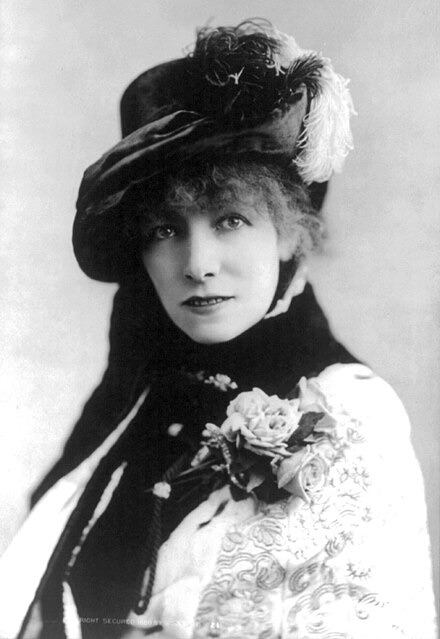
Bernhardt in 1880
Henriette-Rosine Bernard 22 October 1844 Paris, 26 March 1923 Paris
She paid particular attention to the use of the voice, “the instrument the most necessary to the dramatic artist.” It was the element, she wrote, which connected the artist with the audience. “The voice must have all the harmonies…serious, plaintive, vibrant and metallic.” For a voice to be fully complete, she wrote “It is necessary that it be very slightly nasal. An artist who has a dry voice can never touch the public.” She also stressed the importance for artists to train their breathing for long passages.
She noted that “the art of our art is not to have it noticed by the public…We must create an atmosphere by our sincerity, so that public, gasping, distracted, should not regain its equilibrium and free will until the fall of the curtain. That which is called the work, in our art, should only be the search for the truth.”
She also insisted that artists should express their emotions clearly without words, using “their eye, their hand, the position of the chest, the tilting of the head…The exterior form of the art is often the entire art; at least, it is that which strikes the audience the most effectively.” She encouraged actors to “Work, overexcite your emotional expression, become accustomed to varying your psychological states and translating them…The diction, the way of standing, the look, the gesture are predominant in the development of the career of an artist.”